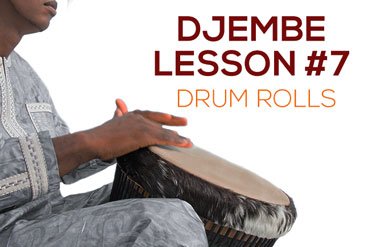
The hand position is relatively simple and can be learned in a few minutes.
The arm provides the power and resonance to play the note and it also determines timing. If your arms are too tense when playing, you'll tire out quickly. If they're too loose, your notes will be weak and your timing may be off.
So let's take that one thing and get it right. This short lesson will teach you how to get the right balance while playing the easiest note.
Keep in mind: Sit with the drum as described in Lesson 1: holding the drum.
Position
The djembe bass note is played in the center of the drum with the entire face of the hand. Keep your hand flat and fingers closed with the thumb slightly outstretched to form a V shape.
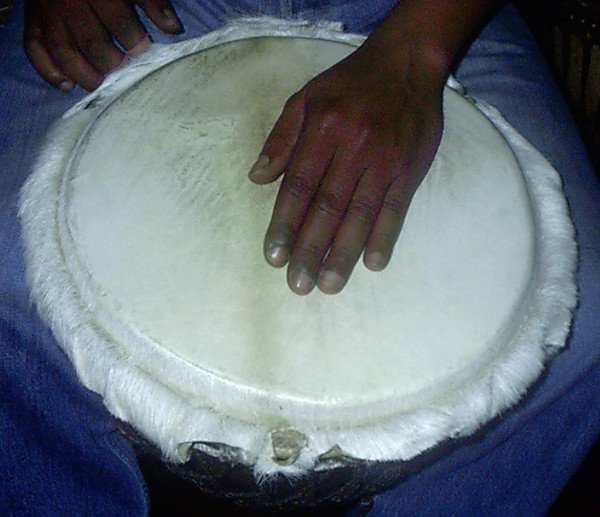
Striking the Drum
Start with the hand only and inch or two above the face of the drum. Raise your arm another 10 inches or so and strike the center of the drum, allowing your hand to bounce off and return to the starting position.
The weight of your arms should be enough to create most of the note. Lift your arms nice and high - about a foot off the drum.
Now, use a little of your arm strength to get a little more volume. This also helps to control the position - where you strike the drum.
Only a little strength is needed from the arms.
Keep in mind: The palm of your hand should be flat. A little tension is needed to maintain this postition.
Once you have tried this several times, repeat with the other hand.
Make sure:
That's the essence of it.
What takes time to get right is the balance between relaxed and tense arm muscles, as well as maintaining good hand position for longer periods.
The Notation
On the charts, a bass note is represented by a black circle, like this:

The note has a different name depending on which hand is used.
Bass Note Exercises
Exercise 1
Count slowly and evenly from 1 to 4 and play a bass note with the 1st hand on count 1 only. Rest for counts 2, 3 and 4 (don't play anything) and then go back to the beginning, making sure to keep even time between counts 4 and 1 (It's as if you're going on to 5).
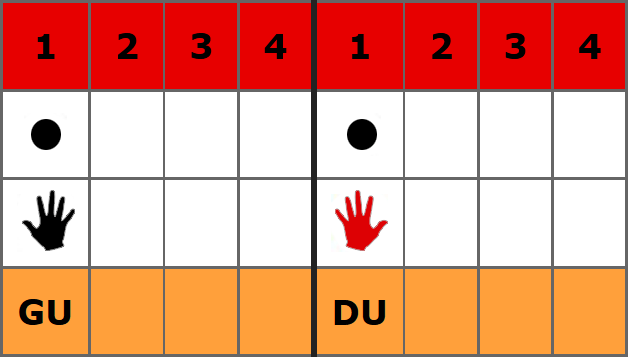
Exercise 2
Play a bass note with the 1st hand on count 1, rest on count 2, the bass note with the 2nd hand on count 3 and then rest on count 4.
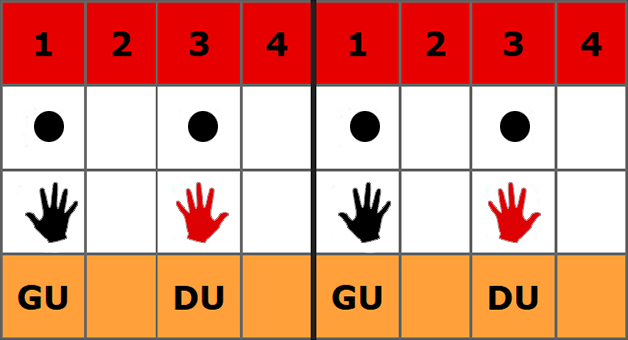
Exercise 3
Now alternate between 1st and 2nd hand on each count. Same thing, just quicker!
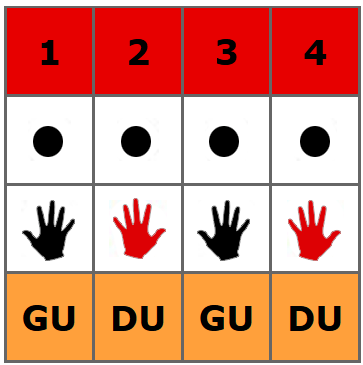
Exercise 4
Play 2 bass notes with one hand and 2 with the other.

Exercise 5
Play 3 with the 1st hand and 1 with the 2nd hand.
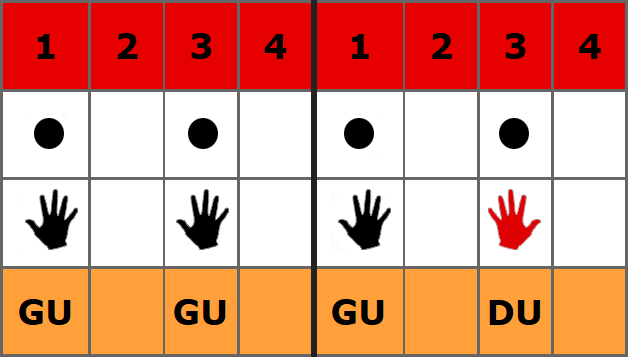
Exercise 6
Same as above, but with opposite hands.

Exercise 7
Play one bass with the 1st hand, rest for one, then three basses on successive beats with alternating hands, starting with the 1st hand.

Exercise 8
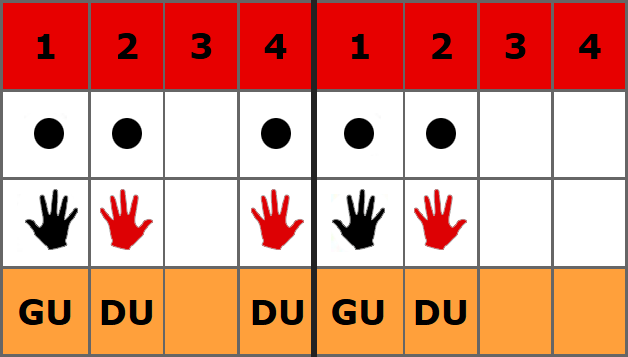
That should give you a good understanding of the djembe bass note and a few simple rhythms to get you started.
Now move on to...





